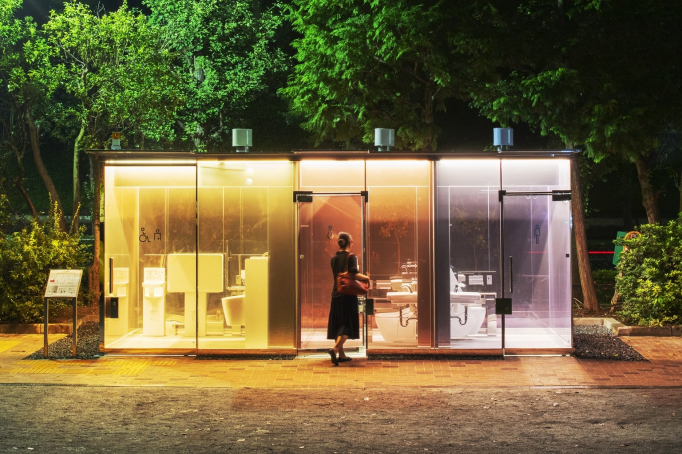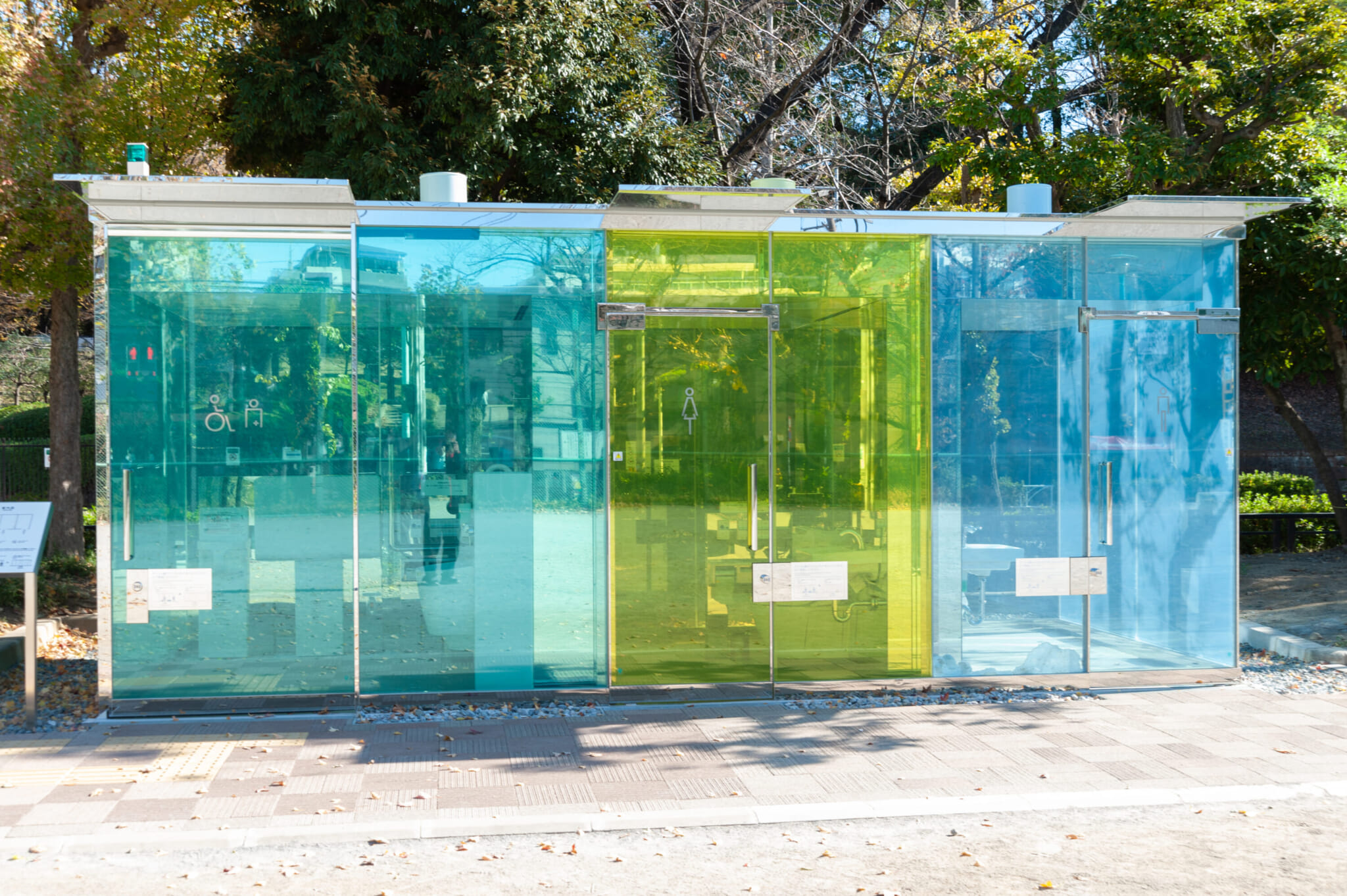When Shibuya’s transparent public toilets first appeared in 2020, they were hailed as a bold, avant-garde innovation. Part of The Tokyo Toilet project, the restrooms were designed by Shigeru Ban and featured sleek glass walls that turned opaque once locked. Symbolizing Japan’s famous omotenashi culture, they appeared to offer a safe and inviting space in an urban setting.
The idea was simple: use the power of design to transform public toilets, which many perceive as dark, dirty or scary, into symbols of hospitality and modern urban life. The project aimed to challenge those negative perceptions while fostering a sense of community, encouraging users to think of the next person in line. But what happens when an innovative idea is hijacked by someone with far more sinister intentions?

Transparent toilets in Yoyogi-Fukamachi Mini Park
A New Kind of Molester
Nicole Fujita recently caught public attention with her unsettling account of voyeurism and exhibitionism linked to these very toilets. During a broadcast of her TBS radio show on October 12, Fujita recounted her unnerving experience at Shibuya’s transparent toilets, where she encountered what she called a “new kind of molester.”
While walking past one of the high-tech, transparent toilets, Fujita noticed a taxi driver using the facility — but something was off. Instead of securing the door and turning the glass opaque, the man deliberately left it transparent, staring at her with a disturbing grin.
“He knew exactly what he was doing,” Fujita said. “He left it unlocked on purpose, staring right at me, leering. It wasn’t a mistake. I guarantee you, he’s done this before. He’s a repeat offender. Everyone, be careful.”
Technical Glitches
It’s also not just the intentional misuse that has caused concern. During the winter of 2022, users reported delays in the glass turning opaque after locking the door, an issue caused by cold temperatures slowing down the technology behind the glass. For some, this delay turned an avant-garde facility into a moment of unwanted exposure.
While Shibuya’s transparent toilets might look like the future, they also highlight the timeless need for caution — and the unintended consequences of transparency in more ways than one.









